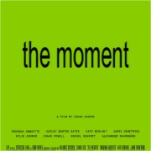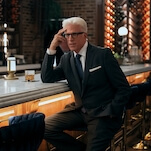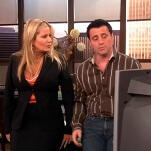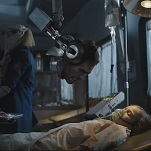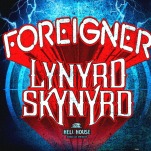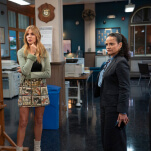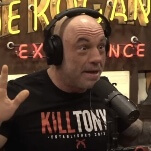November 30
Any dyed-in-the-wool Chicagoan will tell you that the summers make sticking out the nearly six-month winters worth it (whether or not you believe any of us is up to you). All the memories of scraping layers of ice off our windshields and trudging through puddles of slushes melt away on the first 80-degree stretch, which pops up earlier on the calendar with each passing year. You can’t think of the next blast from the polar vortex or an iced-over Lake Michigan because you’re too busy running all over town taking advantage of the good weather. And the city rewards that effort with beautiful parks, a skyline that sparkles or twinkles depending on the time of day, the lakeshore, and of course, festivals of all kinds. If you try, you can make summer last all year.
On the last day of November this year, homegrown hero Jamila Woods brought the warmth and vitality of summer to the Harold Washington Cultural Center in Bronzeville. The artist and activist was performing her acclaimed 2016 album, Heavn, one last time as part of the first Red Bull Music Festival Chicago. The fest spanned as many genres as days; Woods was joined in the lineup by the likes of Vic Mensa, CupcaKKe, Princess Nokia, and Tatiana Hazel. Her Friday night event, dubbed “Heavn Here,” was a festival within a festival, highlighting local artists of all media and genres to demonstrate how to “create heaven in your community.” I’d expect nothing less of a Pushcart Prize-winning poet and associate assistant director of Young Chicago Authors.
Before the show began, a program informed us that the show we were about to see was, in addition to a personal farewell to Woods’ solo debut, “an ode to Black girlhood, a complicated love letter to Chicago, an homage to lost loved ones, and a reclamation of the notion of ‘Heaven.’” The ushers, wearing smiles and After School Matters T-shirts, encouraged solo attendees to fill in spots in the front rather than hang back, making the cultural center’s beautiful auditorium feel cozier than ever. People rushed to their seats as the lights dimmed, splashing drinks and climbing over each other. There was a palpable sense of excitement, as if we were about to get our first Christmas present of the year. But when the lights came back on, the stage had been converted into a verdant rainforest that provided a startling contrast to the many dead leaves on the ground outside.
Then Woods appeared, dressed in an emerald cloak and crop top that made her look like the Lady Of Lothlórien. Over the course of the next 70 minutes or so, she cast a spell of protection over the audience, beating back the winter with the playfulness of Heavn tracks “Bubbles” and “Popsicle.” Woods takes an almost kaleidoscopic approach to her music, gracefully flipping through genres, eras, and moods, combining the sounds of R&B and soul with the chants of childhood, “VRY BLK” being the most powerful example. Heavn Here was no different; the night was full of spoken-word interstitials, including a reading by fellow Chicago treasure (and Ironheart writer) Eve Ewing. Throughout the night, Woods was backed by a chamber orchestra or flanked by dancers, including teens who filled in as a choir. Toward the end, a group of young black girls led us in a recitation that asked that we acknowledge that we can do better before promising to do so. After such an uplifting and unifying experience, it’s clear that Heavn was just the beginning—music festivals help make Chicago bearable, but artists like Jamila Woods are what make the city great.
Black Monument Ensemble took Chicago on a cosmic civil-rights journey
November 15
Garfield Park Conservatory is an oasis on Chicago’s West Side, 68,000 square feet of “landscape art under glass” where meandering footpaths take visitors through various natural environments like the lush, ancient-seeming Fern Room and the dry warmth of the Desert Room. Much more than a greenhouse full of potted plants, it’s an immersive, multi-sensory experience, with flora from around the globe, and even a small pond with axolotls, elusive Mexican salamanders with miraculous regenerative abilities. An afternoon spent walking the conservatory’s grounds is the perfect antidote to the hard edges of the concrete jungle outside, a peaceful retreat from the screech of the Green Line trains running nearby.
Which made it an ideal venue for Where Future Unfolds—Flowers For Chicago, the multi-disciplinary show put on last Thursday night by artist Damon Locks and the Black Monument Ensemble as part of Red Bull Music’s month-long festival. Locks, who makes civically engaged works and teaches art to incarcerated people at a state facility outside the city, formed the BME “to address the shift toward an era when people’s civil rights are again in question.” Taking inspiration from the church-rooted activism of the 1960s and ’70s, as well as its soundtrack in performers like The Staples Singers and Curtis Mayfield, Where Future Unfolds connects the civil rights struggles of the past to the present and projects a vision of the future suffused with spiritual strength, health, and light.
The show was held in the conservatory’s Horticulture Hall, which was lined with dramatically lit banana trees, establishing an organic yet otherworldly atmosphere. And though it was very much a modern-art show, it was accessible and casual, drawing a diverse crowd of creative and activist types, family, and friends.
You could hear the Black Monument Ensemble coming before you could see them, jangling chimes and bells as they took the stage: two percussionists, five singers, a clarinetist, and Locks behind a table of various electronics. After the group announced itself with the a cappella “Black Monument Theme,” Locks led a sermon-like “Statement Of Intent” over wild free-jazz textures, evoking a dim urban disorientation of “Whole neighborhoods upturned / Officials constantly re-framing, presenting, re-presenting,” before declaring, “What is the thing that makes you feel like your heart is growing? We want to see light touching surfaces.”
Flyers for Where Future Unfolds promised “riveting visuals,” which I assumed would be projections of Locks’ own artwork, but when five dancers from Move Me Soul took the stage early on, they added depth and power to an already layered experience. In matching black suits with thick white stripes, they moved with equal parts soul and stoicism, blending hip-hop, contemporary, and West African dance styles. Although they were on and off stage throughout the show, they carried out much of the story’s drama, embodying the vulnerability, strength, and transformation at the performance’s center. In one of the show’s most striking moments, a solo dancer in a space helmet crept in slow-motion down the center aisle toward the stage—a traveler to “where future unfolds”—and gave a charged, metamorphic performance.
The music was a cosmic blend of jazz, hip-hop, gospel, and soul with spoken-word samples and pointed lyrics. On “Sounds Like Now,” an a cappella homily with blooming harmonies, the singers set a scene of institutional neglect and crisis, singing, “The crumbling buildings, oh the city’s killing / All its children right before our eyes,” then repeated the next line, “There goes another one,” a heart-stopping 16 times, like the shots that took Laquan McDonald’s life. Often, one or two members of the ensemble would anchor a song with a circular melody or rhythm, while others—like the outstanding clarinetist Angel Bat Dawid—would improvise, echoing the songs’ messages of rejecting restrictive structures (“Rebuild A Nation”) and trusting in the transformative power of love and community (“Power”).
The last two songs in particular, “Stay Beautiful” and “From A Spark To A Fire,” ended things on notes of connection and potential: “We see you / We love you / Stay beautiful,” said the first, while the last seemed intent on fueling a flame in the heart, the vocal lines building slowly and the dancers making low, sweeping movements like coals heating up.
If Locks’ show was an offering—as the title Flowers For Chicago” suggests—it was one of sanctuary and solidarity. It sent me out into the night regenerated and re-energized to confront the darkness, and a little more hopeful that, down the road, there will be more light touching the city’s surfaces. [Kelsey J. Waite]
Ear-splitting noise and X-rated rap made for a wild weekend at Chicago’s Red Bull Music Festival
November 9 and 10
Almost as soon as the lineup for Drone Activity was announced, the snarky social media posts began: “Did you hear about the corporate noise festival?” And the curators behind the show must have seen it coming. Of the monthlong series of events that make up Chicago’s inaugural Red Bull Music Fest, Drone Activity—an experimental music showcase billed as “a night of ear-splitting, body-shaking frequencies”—was bound to get the most blowback. After all, this is a genre of music whose entire aesthetic is based on being as alienating to mainstream sensibilities as possible.
But based on the scene inside of the gigantic converted warehouse space where Drone Activity took place this past Friday night, those concerns were largely checked at the door. Aside from the sheer numbers of people in attendance (and the signs advertising Red Bull drink specials shining out through the smoky, dimly lit room), the atmosphere wasn’t all that different from other noise shows I’ve attended. The crowd was similarly stone-faced, but polite, with one woman helpfully digging extra earplugs from her backpack and passing them out to unlucky souls who forgot theirs. And the bill, which featured nearly all local artists in the buildup to headliners Stephen O’Malley and Merzbow, was similarly overstuffed, with set times going from 8 p.m. until 1 a.m.
Experiencing noise music live is key, because it’s only with your whole body pleasantly vibrating in front of a giant stack of amps that the average person can really understand its appeal. (Full disclosure: I frequented Chicago noise shows for about five years in the late ’00s and early ’10s, thanks to a good friend who played in a noise band, but am by no means an expert on the genre.) The bottom half of the bill was refreshingly dominated by women and nonbinary artists playing a range of experimental music. And each artist produced their own frequency, from the healing, soothing pulses that washed over the audience during Matchess’ set, to the hypnotic thrum of HOGG’s ritualistic, black metal-inspired dual assault, to Fire-Toolz’ wholly unique (and quite popular, from the size of the crowd) new age/extreme metal/dance music hybrid.
Meanwhile, O’Malley, the guitarist for noise luminaries Sunn O))), whose heavy sounds are featured on the doom-metal influenced Mandy soundtrack, played a more traditional noise-music set—which is to say, extremely loud tones sustained over long periods, played at O’Malley’s signature gut-rumbling lower register. I’d seen O’Malley do something similar at a Sunn O))) show a few years back, but I honestly thought I might never get to see Japanese noise artist Masami Akita, a.k.a. Merzbow, live. (Although he’s generally acknowledged as a godfather—if not the godfather—of the scene, Merzbow rarely plays Stateside; according to his official website, his last American show was in 2015, at another Red Bull-sponsored event in New York City.) And it was certainly a once-in-a-lifetime set: a truly pummeling assault of screeching noise accompanied by a light show so intense, I couldn’t help but be reminded of accounts from people who claim to have been abducted by aliens.
But most bizarre of all, the day after one of the most punishing live shows I’ve ever seen, the ever-inscrutable Merzbow topped off his visit to Chicago by taking a nice walk with some geese:
As the world’s most celebrated noise musician enjoyed his afternoon in the park, across town the energy was beginning to build for a radically different show: Chicago’s own Cupcakke, the 21-year-old rapper who had just released her second album of 2018, Eden, the day before. A line had already wrapped around the block when I walked up to Thalia Hall, a medium-sized venue in Chicago’s rapidly gentrifying Pilsen neighborhood, a half hour before the doors opened, and most of the people standing in it appeared to be as young as Cupcakke herself.
This was no innocent teen-idol concert, however. If you haven’t read any of the many articles about her that have been released in the past year, Cupcakke specializes in uninhibited sex anthems filthy enough to make Lil’ Kim blush. (Two of her biggest hits are titled “Deepthroat” and “Spider-Man Dick,” the latter of which asks, “Have you ever met a girl more nasty than 2 Girls and 1 Cup?”) But although her unabashed sexuality is attractive, both in her music and her social-media presence, what’s really notable about Cupcakke isn’t just that she’s free. She’s also funny as hell, with a disarming wit and a knack for absurdist pop culture references that’s brought us lines like “Give ’em Smurf dick, that’s balls blue.”
She also serves as an enthusiastic (if not always completely politically correct) ambassador for the LGBTQ community on songs like “LGBT” and “Crayons,” whose chorus culminates with a shouted, “Like who you fuckin’ like! Fuck the world!” Similarly, she expresses her support for people on the autism spectrum on Eden track “A.U.T.I.S.M.,” where she says, “Every kid with autism know that my heart with ’em.” She was considerate on Saturday as well, when she called fellow Chicagoan Tink, recently freed from a years-long conflict with her label that hampered her ability to release new music, out on stage to take the spotlight for one song. Cupcakke, confident as only a person who values their dignity more than performing with either Cardi B or Iggy Azalea can be, waited backstage.
Explicit raunch and earnest allyship is a uniquely liberating blend, and while Cupcakke’s star is still rising nationally, the hometown crowd at Thalia Hall on Saturday greeted her like she had just returned from a sold-out stadium tour, and sang along with all her songs like they’d heard them nonstop on the radio for weeks. Unlike the epic ear-shredder the night before, Cupcakke’s show was relatively short, clocking in at a little more than two hours including openers DJ Funk and DJ King Marie. She performed her ass off every moment she was on stage, though, with little more than a microphone, a DJ, and the chaise lounge where she perched for a few verses to back her up.
The upbeat, inclusive vibe among Cupcakke’s sweaty devotees couldn’t have been more different than the previous evening’s defiantly grim howls of sonic discontent, either. Yet we were all united, across venues and genres, in our search for transcendence from the everyday world. If an energy-drink company is going to trade in extremes, I’d much rather see this than another snowboarding competition. [Katie Rife]





























